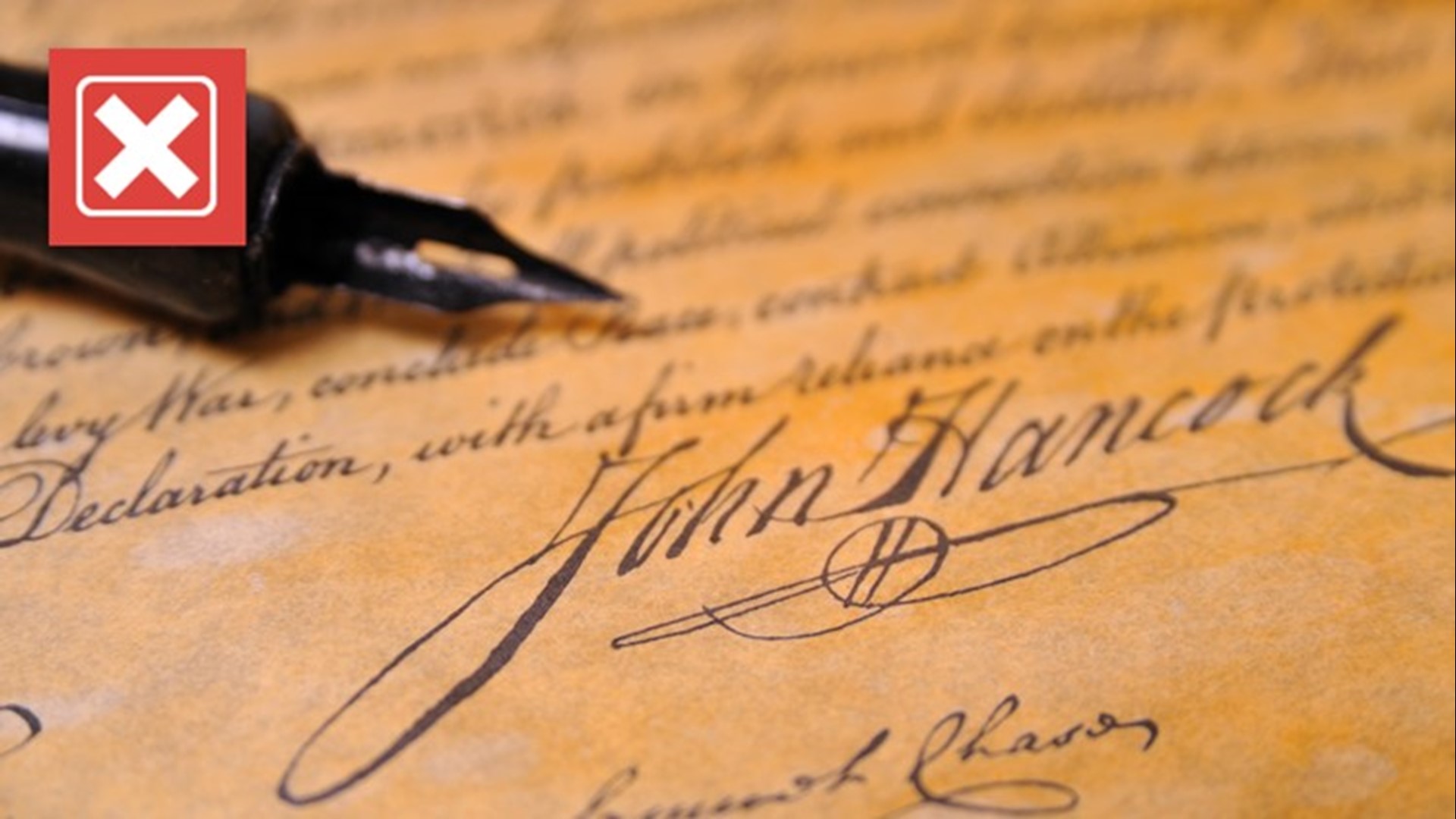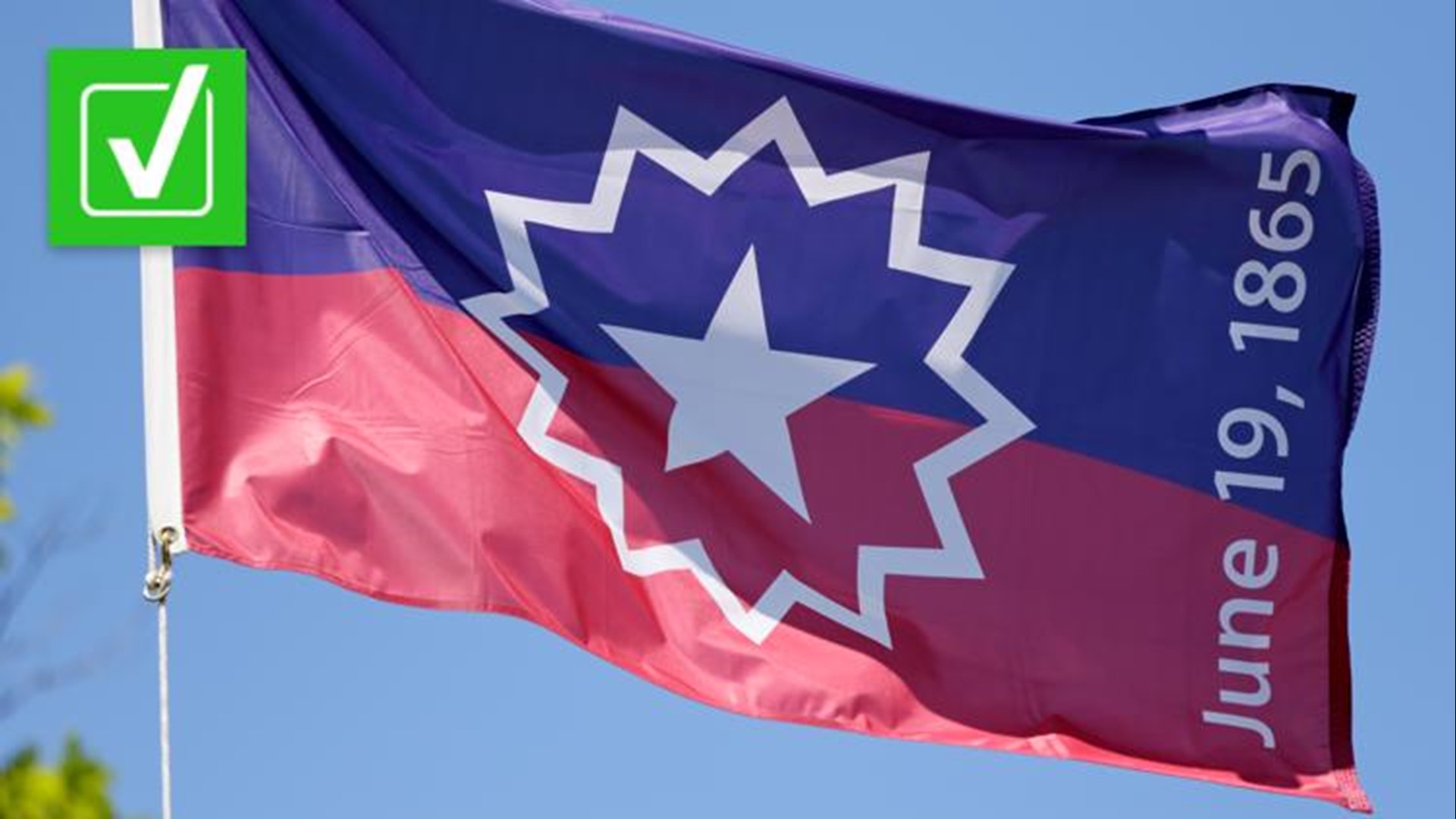Independence Day, also referred to as the Fourth of July, commemorates the anniversary of the day when the Second Continental Congress formally adopted the Declaration of Independence on July 4, 1776. On the federal holiday, many Americans celebrate by going to parades, cookouts, fireworks shows or other festivities in their communities that mark the official birthdate of the United States of America.
While many people already know that the Declaration of Independence was adopted on July 4, 1776, they may not be aware of the exact date the official document was signed, according to recent Google Trends searches.
THE QUESTION
Was the Declaration of Independence signed on July 4, 1776?
THE SOURCES
THE ANSWER
No, the Declaration of Independence wasn’t signed on July 4, 1776.
WHAT WE FOUND
In October 1774, the First Continental Congress sent a petition seeking to obtain a “redress of grievances and relief” to Great Britain’s King George III, the ruler of the Thirteen Colonies. The petition, which was signed by 12 colonies, “was an attempt at reconciliation between Britain and the colonies, proposed as an alternative to the more radical factions seeking complete independence,” according to the Massachusetts Historical Society. However, King George III did not respond to the petition. Months later, on April 19, 1775, shots were fired by American and British soldiers at Lexington and Concord in Massachusetts, marking the beginning of the American Revolutionary War.
In May 1775, the Second Continental Congress held its first meeting in Philadelphia at what is now known as Independence Hall. Delegates in the Second Continental Congress also petitioned King George III in July 1775, again seeking a peaceful resolution between Britain and the Thirteen Colonies in an attempt to avoid going to war, but instead, in August 1775, a royal proclamation declared the colonies were "engaged in open and avowed rebellion,” according to the National Archives.
After King George III’s royal proclamation, the National Archives says the Second Continental Congress began taking on the responsibilities of a national governing body. They established the Continental Army, a continental currency, elected George Washington as the Commander-in-Chief and created a post office for the colonies.
By May 1776, eight of the colonies had already decided they would support independence, but the National Archives says it wasn’t until June 7, 1776, that the clearest call for independence came when Richard Henry Lee of Virginia read what is now known as the Lee Resolution, proposing independence for the Thirteen Colonies from Britain.
Before Congress recessed for three weeks, a Committee of Five was appointed to draft a statement that would declare the colonies' case for independence to the world. The committee included John Adams, Roger Sherman, Benjamin Franklin, Robert R. Livingston and Thomas Jefferson.
The first draft, which was primarily written by Jefferson and edited by Adams and Franklin, was presented to Congress on June 28, 1776, a few days before it reconvened. On July 2, 1776, 12 of the 13 colonies — New York did not vote — adopted the Lee Resolution immediately before Congress began to consider the Declaration of Independence. After a few changes and revisions to the document, Congress officially adopted the Declaration of Independence on July 4, 1776.
After the adoption of the Declaration of Independence was officially approved on July 9, 1776, by the New York Convention, Congress ordered on July 19, 1776, that the declaration be “fairly engrossed on parchment with the title and stile [sic] of 'The unanimous declaration of the thirteen United States of America,' and that the same, when engrossed, be signed by every member of Congress.” The National Archives says “engrossing is the process of preparing an official document in a large, clear hand.”
A journal of Continental Congress records shows that delegates began signing the engrossed Declaration of Independence on Aug. 2, 1776, in Philadelphia.
“One of the most widely held misconceptions about the Declaration is that it was signed on July 4, 1776, by all the delegates in attendance,” the National Archives says on its website. “John Hancock, the President of the Congress, was the first to sign the sheet of parchment. In accordance with prevailing custom, the other delegates began to sign at the right below the text, their signatures arranged according to the geographic location of the states they represented. New Hampshire, the northernmost state, began the list, and Georgia, the southernmost, ended it.”
While 56 delegates eventually signed the Declaration of Independence, according to the National Archives, not all of them were present on Aug. 2, 1776, and some of them never signed the document, including Committee of Five member Robert R. Livingston, “who thought the Declaration was premature.”
More from VERIFY: Yes, Juneteenth is now a federal holiday
VERIFY
Our journalists work to separate fact from fiction so that you can understand what is true and false online. Please consider subscribing to our daily newsletter, text alerts and our YouTube channel. You can also follow us on Snapchat, Twitter, Instagram or Facebook.


